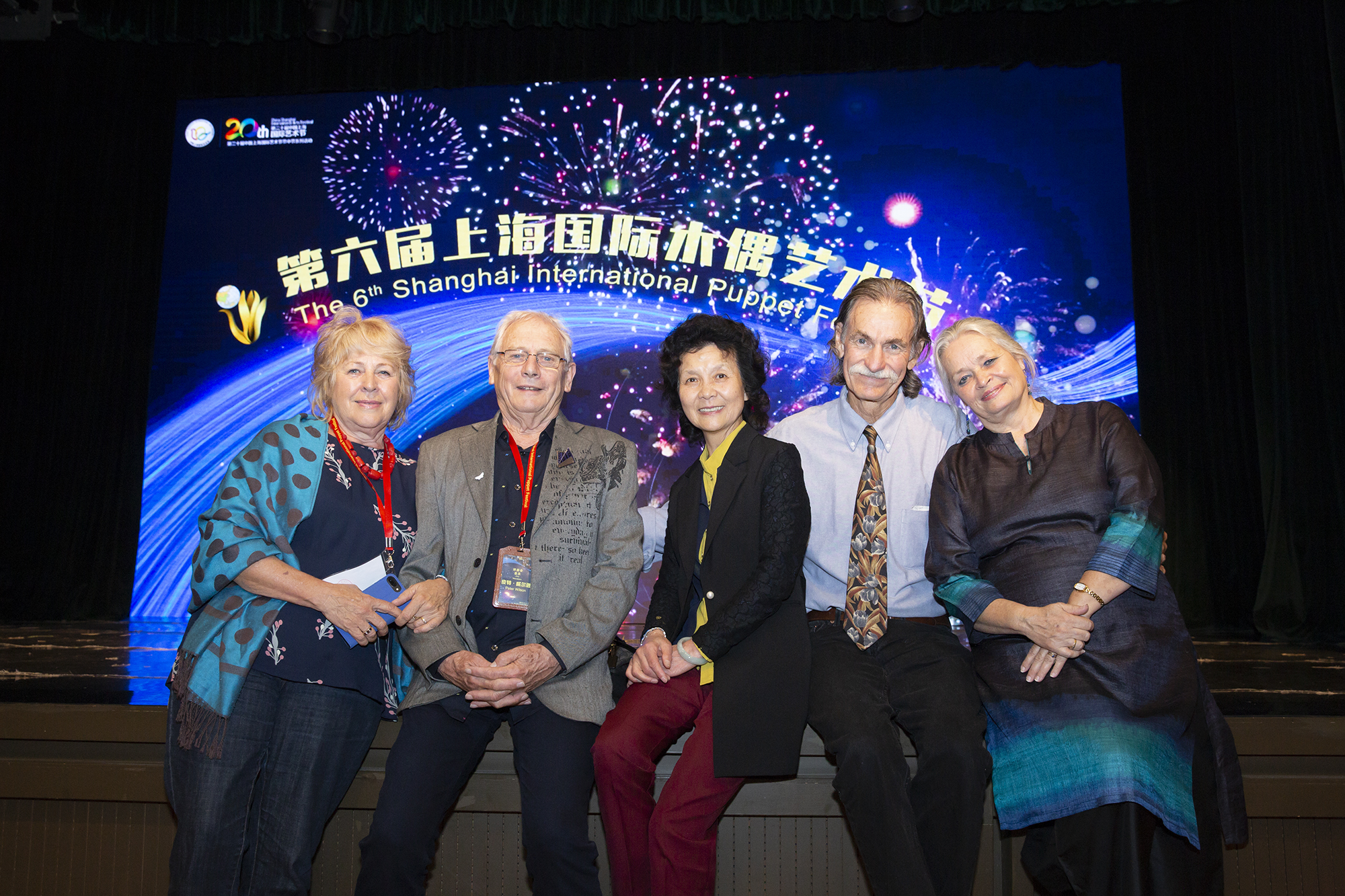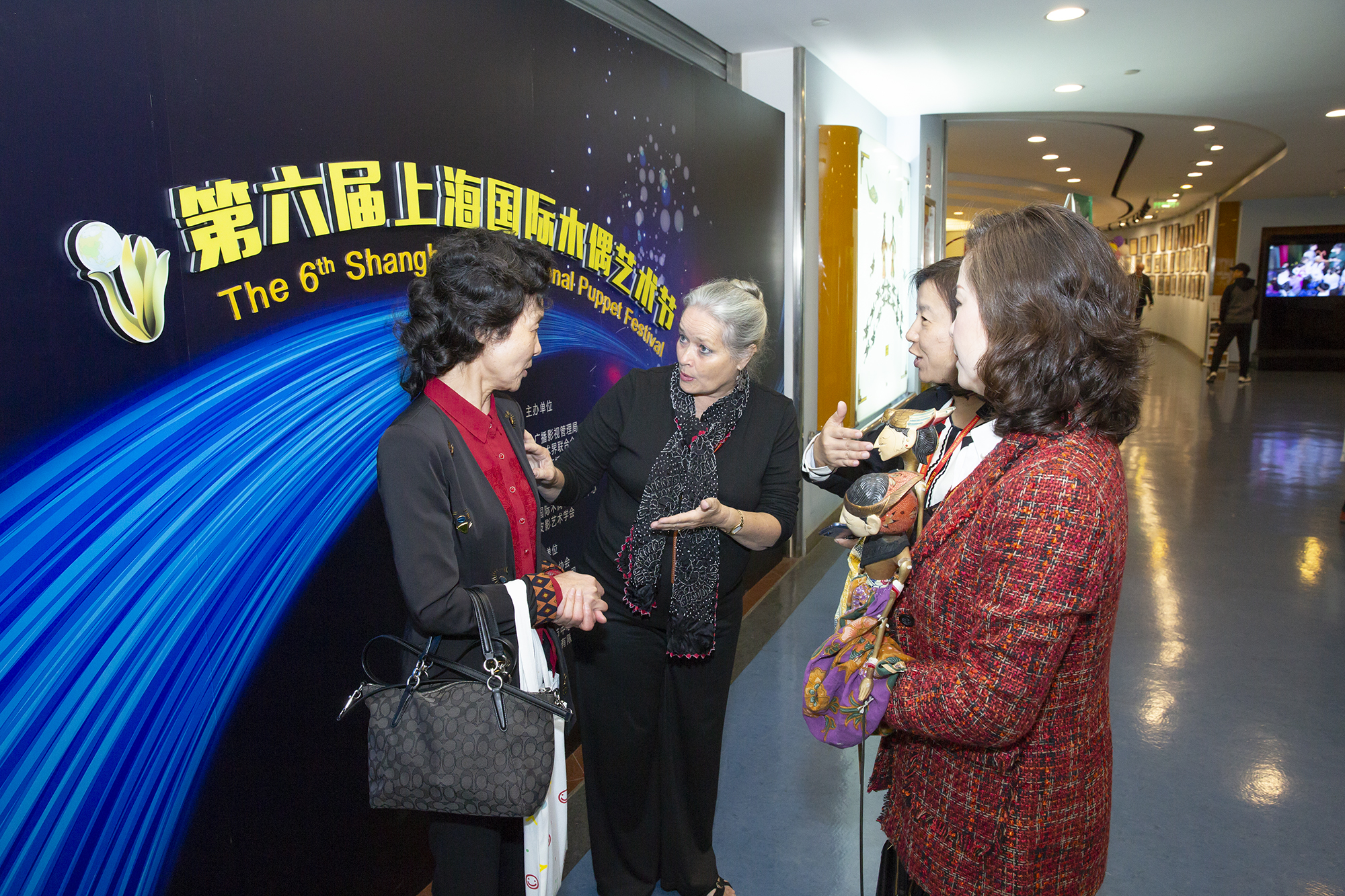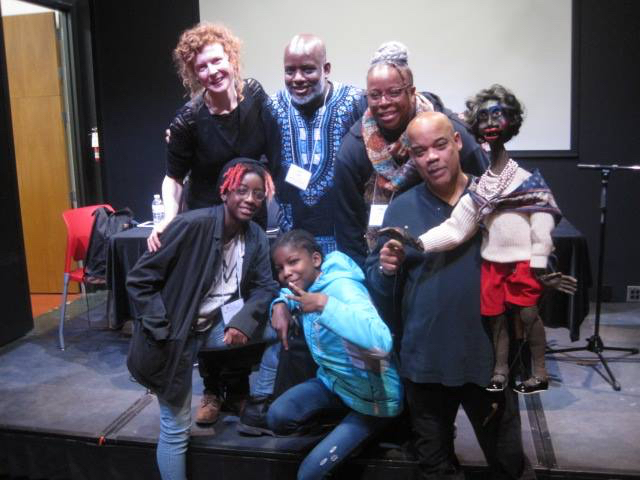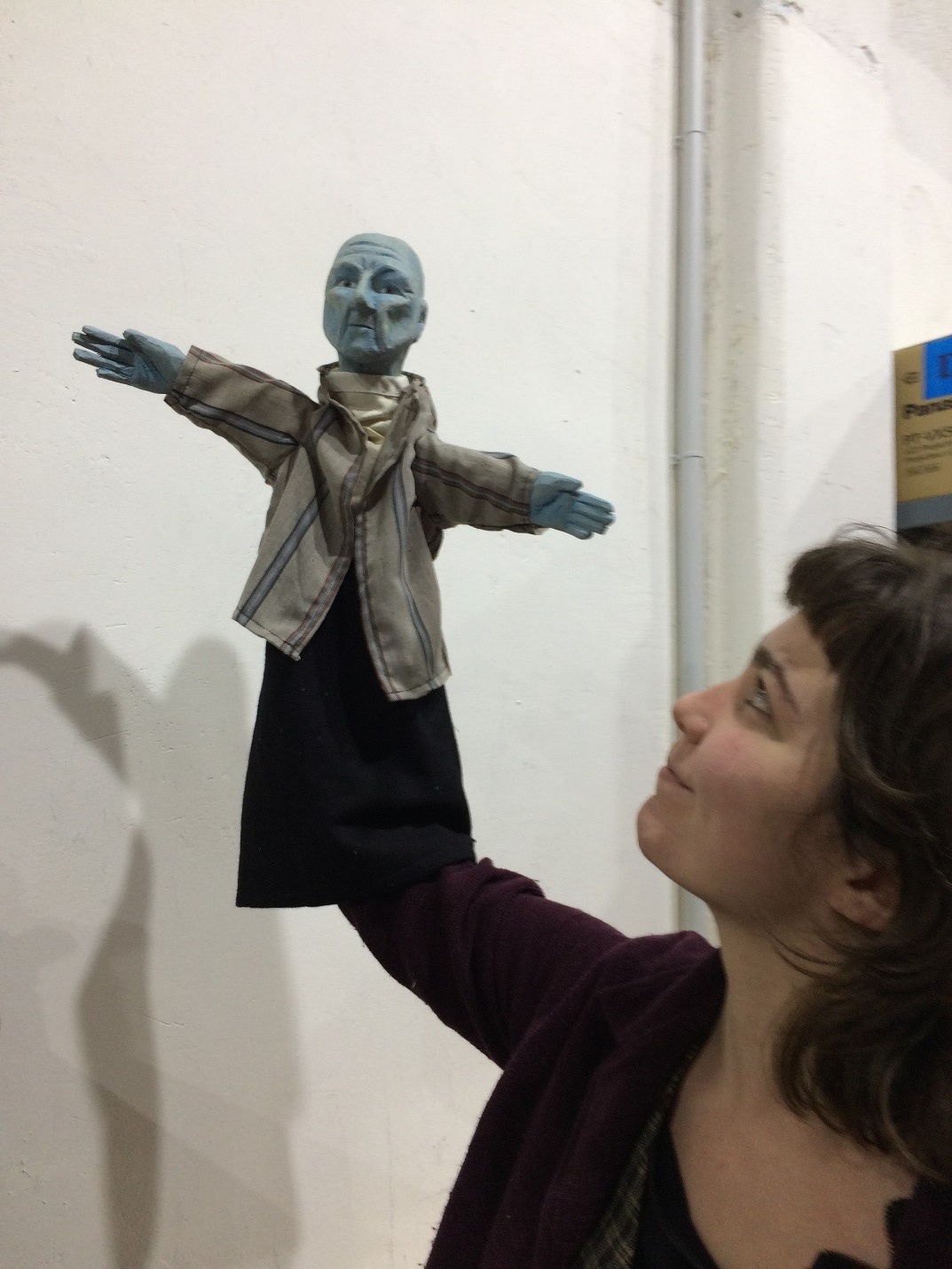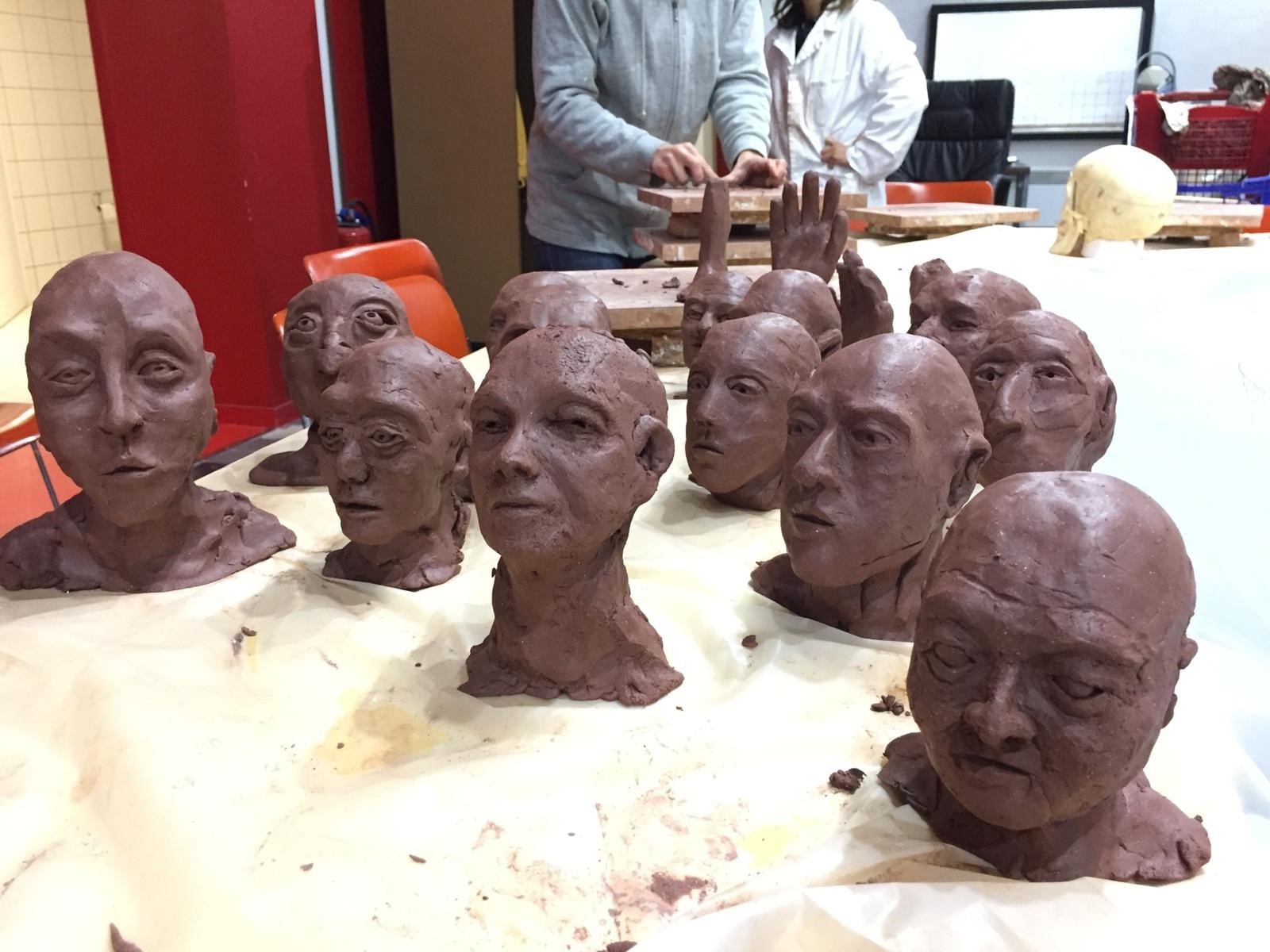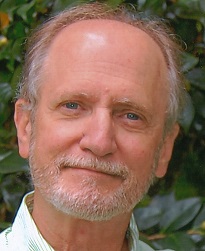Adventures in China Part 1: Shanghai, November 1-6, 2018
/UNIMA-USA members, Karen Smith and David Heesen, husband and wife from California, attended two international puppetry festivals and seminar forums held in China this past November. The first event was in Shanghai, the second in Langzhong in Sichuan Province. David and Karen were royally hosted in both cities! And their exposure to Chinese puppetry was quite phenomenal! Karen and David will now share some of the highlights of their 3-plus weeks in that fascinating country. (Stay tuned for part 2.)
The 6th Shanghai International Puppet Festival “Golden Magnolia” & The 4th International Forum on Puppetry
Photo courtesy of UNIMA CHina. Chinese and international festival performers, hosts and organizers, emcees, jury members and government officials pose for a group photo after the Closing Ceremony of The 6th Shanghai International Puppet Festival “Golden Magnolia”.
Karen Smith: I was invited to the first festival and forum, which was held in Shanghai November 1-6, as a member of the Shanghai international festival jury. As Vice President of UNIMA International, I also participated in the Opening and Closing Ceremonies, handed out prizes, gave an introductory speech at the forum, and generally did my best to uphold the honor of our great organization. David gave a presentation on Indonesian wayang at the forum and was an enthusiastic festival-goer.
The festival organizers were the Shanghai Dramatists Association and the Shanghai Puppet Theatre Co., Ltd, and the event was hosted by eight organizations, including Shanghai Municipal Administration of Culture, Radio, Film & Television, UNIMA China, and China Puppetry and Shadow Arts Association.
The majority of the international shows were performed at the beautiful headquarters of the Shanghai Puppet Theatre while the three Chinese shows were performed in auditoria across the city.
The festival included ten international shows from eight countries: Dreamer (2015) by Dream Puppets from Australia; Wild West Cabaret (2017) by The Fifth Wheel from Germany; The Story of a Donkeygull (2016) by Ta Panta Fi Puppet Company from Greece; Flora’s Dance (2012) by Avital Dvory Visual Theatre Group from Israel; Dorme (2011) by La Capra Ballerina Puppet Theatre from Italy; from the Netherlands, The Thousand and Last Night by Ila van der Pouw and Little Mole Bim (2012) by Koekla; from Russia, Thumbelina (2005) by Omsk State Theatre of Puppet, Actor and Mask “Arlekin” and The Miracle of the Scarlet Sails (2016) by Teatrol-Theater; and Peter Pan (2015) by Theatre for Children Kragujevac from Serbia.
From host country China, three major productions were on offer: from Sichuan, The Dragon Gate Legend (2014) by Sichuan Giant Puppet Troupe; from Guangdong, Garbage Battle (2016) by Guangdong Province Puppet Art Theater Co., Ltd; and from Shanghai, the premiere of The Last Warrior Elephant (2018) by SMG Live and Shanghai Puppet Theatre Co., Ltd. These three productions represented three very different styles of Chinese puppetry. The Sichuan production, performed with the large rod puppets the region is famous for, is a colorful and charming fresh take on a local legend, a blend of traditional rod puppetry with first-class modern staging, lighting and a score based on music of the Nanchong region. The Guangdong production takes a very contemporary theme – garbage, and the looming catastrophe for the planet if we humans don’t do something quickly about managing our waste. This show with human actors – all young members of the company – and body and costume puppets among the mixed puppetry techniques on show, is an exuberant piece of theatre. The third production, Shanghai Puppet Theatre’s The Last Warrior Elephant, based on Shen Shixi’s novel of the same name, is set in Xishuangbanna (Yunnan Province) during the Second Sino-Japanese War (1937-1945). With its nod to War Horse and William Kentridge aesthetics, this is a major production of international quality, visually and technically beautiful, a stunning full-length drama with human actors, dancers, and a herd of elephants each masterfully animated by three puppeteers.
Photo courtesy of UNIMA CHina. Cathryn Anne Robinson (from New Zealand, partner and co-founder with Peter of puppet companies in Hobart, Fremantle and Wellington), L. Peter Wilson, Tang Dayu, David Heesen, Karen Smith.
The four international festivals I have attended in China since 2014 have all had a “competition” component. At this, the Golden Magnolia Shanghai International Puppet Festival, the 11-member jury comprised nine prominent Chinese administrators, artists, and leaders in the field of Chinese puppetry – Liu Wenguo, Zhou Yusheng, Mao Shi’an, Chen Yingxian, Wang Hao, Tang Dayu, Yu Rongjun, Wang Junjie, He Xiaoqiong – and two international judges – myself (Karen Smith) and L. Peter Wilson (co-founder and Artistic Director of Tasmanian Puppet Theatre, Hobart, Tasmania, 1970-1980, today the Terrapin Puppet Theatre; co-founder and former Artistic Director of Spare Parts Puppet Theatre, Fremantle, Western Australia, 1981-1996; Artistic Director of Capital E National Theatre for Children, Wellington, New Zealand, 1997- ; and founder, director and performer of his own company, Little Dog Barking Theatre Company, Wellington, New Zealand, 2010- ).
At the International Forum, the following were the four keynote speakers, with the title of their presentations. Li Yannian: “Themes and Aesthetics of Chinese and Foreign Puppetry”; Rob Bloemkolk: “About Tarzan and growing older on stage”; Zhao Genlou: “Integration of World Puppetry and Active Inheritance and Development of Traditional Puppetry”; and David Heesen: “An Introduction to Indonesian Wayang, a Video Presentation”.
Dave’s and my local guide from Shanghai Puppet Theatre was Qian Jialei (English name “Elisa”). She, along with all the artists and personnel at the theatre, looked after us very well! They were wonderful hosts.
David Heesen: We are staying in a fine, old hotel (The Pacific) just across from the main park in Shanghai, People’s Park, arrangements made for us by the good folks at the Shanghai Puppet Theatre. Karen is serving as one of two international judges at their week long biennial festival. So, by day and night we attended performances, and the rest of the time is spent eating. For lunches and dinners there might be a dozen of us seated around a table with a massive lazy Susan turntable in the middle piled with 20 to 30 dishes. Ducks, chickens, pigeons, quail (and their eggs), pork ribs, pork chops, pork char siu (Chinese BBQ pork), squirrel fish, jelly fish, carp, sponges and mushrooms, pak choy, ong choy (water spinach), other choys, melons – anything that moves or grows is fair game. And it just keeps coming and coming.
Photo courtesy of UNIMA CHina. (Left to Right): Tang Dayu (Vice President, UNIMA China; Vice President, China Puppetry and Shadow Arts Association; National First Class Actor), Karen Smith (UNIMA-USA; Vice President, UNIMA), Liu Jin (Office Director, Shanghai Puppet Theatre), and He Xiaoqiong (General Manager, Shanghai Puppet Theatre Co., Ltd; National First Class Actor)



